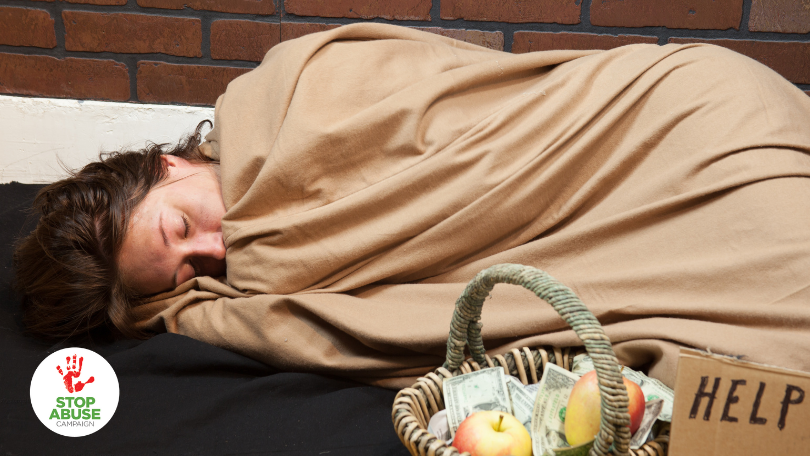June is here once again, and Pride Month is in full bloom, but for many LGBTQ youth, a celebration is not an option.
The harsh reality is that countless LGBTQ teens face rejection from their families, with many either running away to escape the conflict or being kicked out of their own homes and left fending for themselves in the streets. This adversity leaves them traumatized and vulnerable, unsafe in a hostile and prejudiced world.
Research shows that members of the LGBTQ community are 120% more likely to experience homelessness than their non-LGBTQ peers. For LGBTQ tweens and teens, both homelessness and the struggles leading up to it may be forms of Adverse Childhood Experiences (ACEs) and can have severe negative effects on mental health lasting well into adulthood. Preventing these experiences is vital to ensuring the emotional well-being of these youth.
It’s not surprising that this particular demographic would have higher ACE scores than their peers. What’s surprising is just how prevalent homelessness is amongst LGBTQ youth.
How many LGBTQ youth are homeless?
According to the National Network for Youth, up to 40% of the 4.2 million youth experiencing homelessness identify as LGBTQ. This heartbreaking statistic reflects two enormous problems in our society:
- A lack of adequate resources, and
- An overabundance of prejudice.
To break it down further, within the homeless LGBTQ youth demographic, youth of color experience the highest rates of homelessness, with Native/Indigenous youth being twice as likely to face homelessness than those who are white. Black, Latinx, and multiracial LGBT youth are also at much greater odds. According to The Trevor Project, when it comes to gender identity, transgender and nonbinary youth reported the highest rates of homelessness and housing instability.
Why are homeless LGBTQ youth vulnerable?
Transgender family rejection
LGBTQ youth, in general, tend to come out between 10 and 14 years of age and often face rejection from their families. However, the risk of rejection is much higher for trans youth.
In a study of transgender family rejection by Augustus Klein and Sarit Golub, more than half of transgender adults reported having experienced little to no family rejection when coming out. However, about a third of the participants reported experiencing moderate rejection and over 14% experienced high levels of rejection. Those who experienced high levels of rejection were unsurprisingly much more prone to substance abuse and suicide.
Feeling accepted is vital for trans youth, and rejection by one’s family is likely to be experienced as emotional abuse, emotional neglect, and possibly other ACEs that have the potential to stick with the survivor for life, with detrimental effects on their mental health.
What happens to homeless LGBTQ youth?
A lack of shelter leaves LGBTQ youth at a much higher risk of violence, abuse, and exploitation than their cisgender and heterosexual counterparts.
Some of these young people end up living in their cars or couch-surfing with friends, but many end up in shelters. Sadly, many shelters fail to respect residents’ gender identities, which puts transgender teens at a greater risk of sexual assault and violence. Homeless gay and trans youth experience sexual victimization at twice the rate of their heterosexual cisgender peers. According to one study, gay youth are ten times more likely to be sexually abused while living in a shelter, and trans youth living in shelters are at a heightened risk of physical abuse when forced to use showers that do not align with their gender identity.
According to a report by The Trevor Project, LGBTQ youth are more likely to report engaging in “survival sex”- exploitative sex offered in exchange for money, shelter, or other basic needs. They are also more likely to engage in risky sexual behaviors such as unprotected sex.
Unsurprisingly, homeless LGBTQ teens report higher rates of mental illness. Suicide rates are alarmingly high in this demographic, with LGBTQ youth more than four times as likely to attempt suicide than youth who are straight and cisgender.
How to help homeless LGBTQ youth
LGBTQ shelters
So, what can we do to help ease the burden of homelessness and housing instability amongst the LGBTQ youth community?
One method is to advocate for better shelter conditions. Access to safe housing is vital—without shelter, teens face a much higher risk to their physical and mental well-being. Funding for safe, affirming, and inclusive shelters is needed to ensure that these youth can find safety and some sense of stability to begin healing.
Organizations like The Trevor Project and True Colors United are great starting points for information on how to help advocate for young LGBTQ people experiencing housing instability. They offer helpful programs and resources designed to help level the playing field for these at-risk youth.
Although it seems daunting, we can still impact these harrowing statistics. If we advocate for, donate to, and support causes for LGBTQ youth, we can help prevent harmful ACEs in this vulnerable population.
We CAN Help
LGBTQ youth face devastating circumstances every day in our country—circumstances that no child should ever be exposed to.
These children deserve safety and security, and we can make that happen by working together to improve our shelters and by funding helpful resources for LGBTQ youth.
Education and advocacy are also vital in spreading the word about the plight of this vulnerable demographic and highlighting to parents the importance of accepting their children as they are unconditionally.
We can improve the statistics. We can work towards a more accepting society.
We can put pride back into the hands that it was taken from.
We can stop abuse.
Do you know your score?
Discover your ACE score and unlock a new understanding of your life. Take the test and gain insights into how your early experiences shape your well-being. Don't let your past define you – empower yourself with knowledge.

Saylah Johnson
Crisis Counselor
Saylah is a Crisis Text Line counselor and mental health advocate who aspires to become a Clinical Mental Health Counselor. Her biggest goal is to help as many people as possible find hope and healing in their lives.
